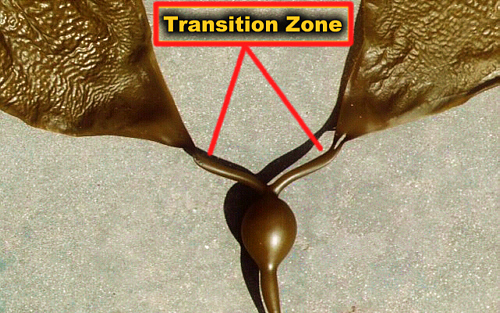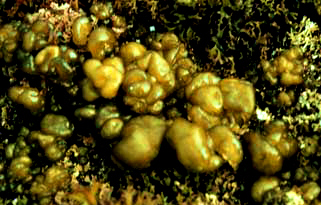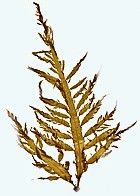

a] Holdfast which attaches the alga to the substrate,
b] Stipe which is stem-like
c] Laminae (blades) which are leaf-like
d] They may also have a hollow Float
Meristematic Transition Zone
Laminae usually persist for six months.

False Tissues have separate filaments which become attached some time after their inception.
This occurs in the Red Algae (Rhodophyta) and in some Brown Algae like Leathesia & Desmarestia.
 Leathesia |
 Desmarestia |
| These two Phaeophytes produce False Parenchyma | |


They are Perennial and regenerate their Laminae.
